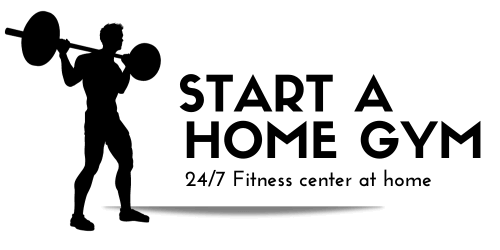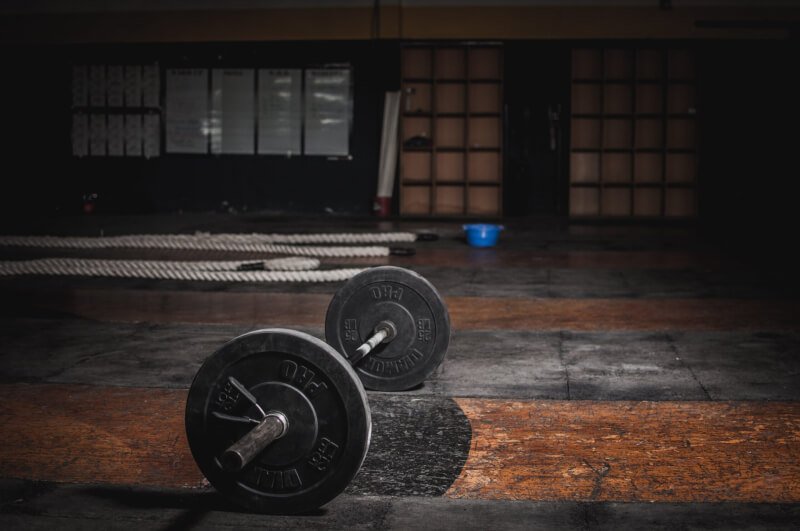Whether you’re a fitness enthusiast or just starting to build your own home gym, keeping your workout equipment organized is essential for maximizing space and maintaining motivation. With an array of dumbbells, resistance bands, yoga mats, and other gear, it’s easy for things to become cluttered and hard to find. Luckily, we’ve got you covered with 5 simple tips that will help you efficiently organize and store your workout equipment, making your home gym a tidy and inviting space where you can focus on your fitness goals.
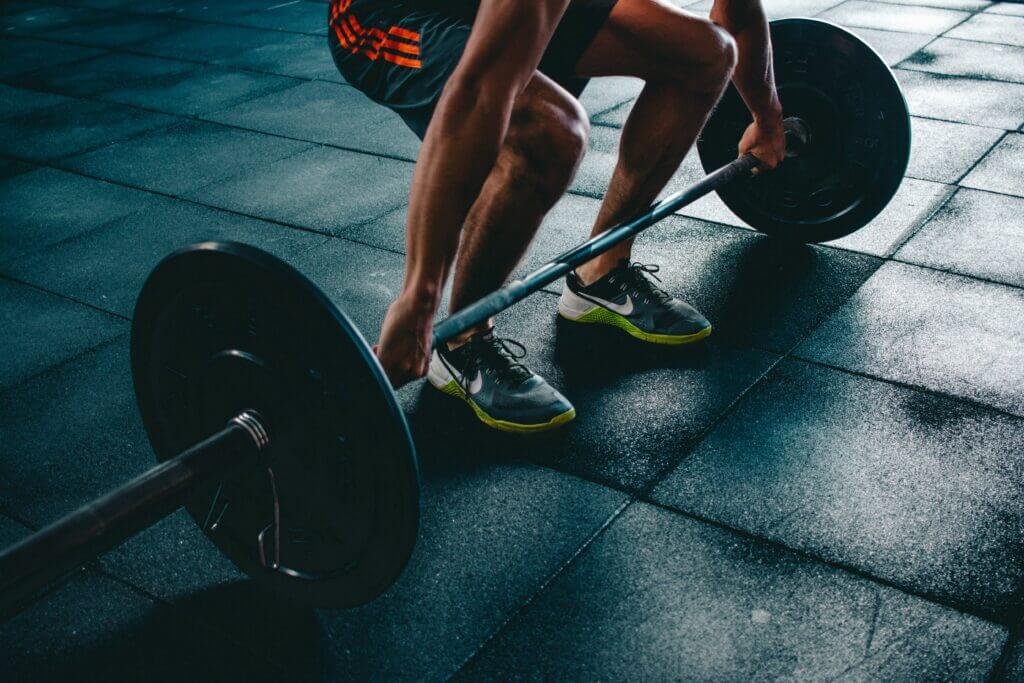
Consider your space
Evaluate the available space
When organizing your workout equipment in a home gym, the first step is to evaluate the available space. Take measurements of the room to get an idea of how much space you have to work with. Consider the layout of the room and take note of any obstacles or limitations. This will help you determine the best way to arrange your equipment for maximum efficiency.
Determine the layout
Once you have evaluated the space, you can determine the layout of your home gym. Consider the flow of traffic and how you will move between different pieces of equipment. Place larger equipment, such as treadmills or weight benches, in areas where they won’t obstruct your movement. Keep in mind that having a clear path will not only make your workouts safer but also more enjoyable.
Maximize vertical storage
Utilizing vertical space is a great way to maximize storage in a home gym. Install shelves or cabinets on the walls to store smaller items such as dumbbells, resistance bands, or yoga mats. This not only keeps your equipment organized but also frees up valuable floor space. Make sure to secure the shelves properly to prevent accidents. Vertical storage is especially useful when you have limited floor space and want to make the most of the available area.
Allocate zones for different equipment
To create an organized and functional home gym, it’s important to allocate specific zones for different types of equipment. This will make it easier to find and access what you need during your workouts. For example, designate an area for cardio equipment like treadmills or stationary bikes, and another area for strength training equipment such as dumbbells or weight benches. Having dedicated zones will help you streamline your workouts and ensure that equipment is always in its proper place.
Invest in storage solutions
Choose the right storage equipment
Investing in the right storage equipment is essential for keeping your home gym organized. Consider the types of equipment you have and choose storage solutions that can accommodate them. For example, if you have a collection of dumbbells, opt for a dumbbell rack that can hold various sizes. If you have smaller accessories like resistance bands or yoga blocks, consider storage solutions with compartments or drawers. By choosing the right storage equipment, you can keep your workout gear easily accessible and in good condition.
Utilize wall-mounted options
Wall-mounted storage options are a fantastic way to optimize space in a home gym. Wall-mounted shelves or cabinets can be used to store smaller items like towels or water bottles, while wall-mounted hooks or racks can hold items such as resistance bands or jump ropes. By utilizing wall space, you can keep your equipment organized and within reach without taking up valuable floor space. This is especially useful if you have a small home gym or limited storage options.
Install shelves and cabinets
Shelves and cabinets are versatile storage solutions for a home gym. They can be used to store a wide range of equipment, from kettlebells to medicine balls. Install open shelves for easy access to frequently used items, and consider cabinets for equipment that you don’t use as often. Labeling and categorizing shelves and cabinets can further enhance organization and help you find what you need quickly. Take advantage of vertical space by installing shelves or cabinets to keep your equipment neatly arranged and easily accessible.
Opt for storage racks and hooks
Storage racks and hooks are ideal for hanging larger or bulkier items in your home gym. These can be used to store items such as resistance bands, exercise balls, or even yoga mats. By hanging these items, you not only save space but also prevent them from getting tangled or damaged. Make sure the hooks or racks you choose are sturdy and can support the weight of the items you plan to hang. Utilizing storage racks and hooks can help declutter your home gym and make your equipment easily visible and accessible.
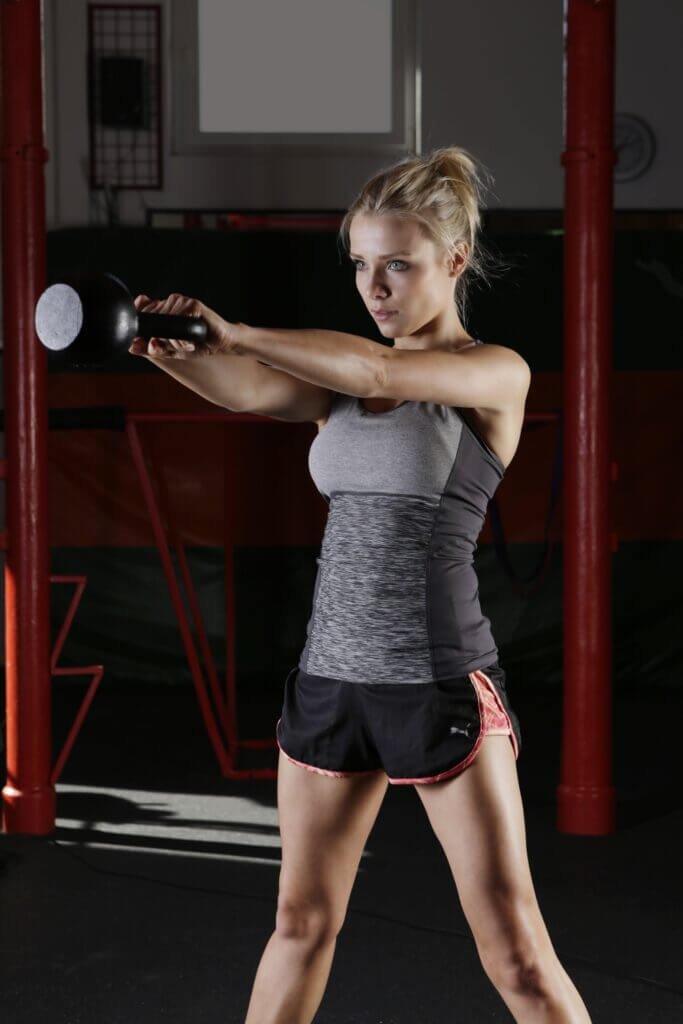
Categorize and group equipment
Separate cardio and strength equipment
Separating your cardio and strength equipment is a simple but effective way to keep your home gym organized. By designating specific areas for each type of equipment, you can easily locate what you need and streamline your workouts. Place your cardio equipment in one section of the room, such as treadmills or exercise bikes, and your strength training equipment, like weights or resistance bands, in another section. This separation will not only make your gym more visually organized but also help you create a systematic approach to your workouts.
Organize equipment by size and weight
Organizing your workout equipment by size and weight makes it easier to find what you need when you need it. Place larger and heavier items such as weight plates or kettlebells on lower shelves or storage racks. This will prevent any strain or difficulty in accessing these items. Smaller items like dumbbells or resistance bands can be stored on higher shelves or in wall-mounted compartments. By categorizing your equipment based on size and weight, you ensure that everything has a designated spot, making it easier to maintain an organized and efficient home gym.
Group accessories and smaller items together
To further optimize organization in your home gym, group accessories and smaller items together. Store items like resistance bands, exercise balls, or yoga blocks in the same area. This way, you can easily locate specific accessories when you need them, without having to search through multiple storage spaces. Consider dedicating a small drawer or bin for these items, ensuring that they are stored in an orderly manner. Grouping accessories together will not only make your workouts more convenient but also help you maintain a clutter-free home gym.
Designate specific spots for different equipment
By designating specific spots or shelves for different types of equipment, you can create a system that promotes organization and efficiency. For example, assign one shelf for yoga equipment, another for weightlifting accessories, and another for cardiovascular equipment. This allows you to quickly locate what you need and helps prevent equipment from becoming mixed up or misplaced. Additionally, labeling these designated spots can further enhance organization and make it easy to maintain an orderly home gym.
Create a labeling system
Label storage containers and shelves
Creating a labeling system is an effective way to keep your home gym organized. Label storage containers and shelves to indicate what each one contains. For example, label a storage bin as “Resistance Bands” or a shelf as “Yoga Equipment.” This simple practice makes it easy to find specific items and helps prevent equipment from being misplaced. Use clear, legible labels, and consider using different colors or fonts to further distinguish between categories of equipment. A labeling system adds visual clarity to your home gym and saves you time when searching for equipment during your workouts.
Use color-coded labels for quick identification
In addition to text labels, consider using color-coded labels for quick identification of different types of equipment. Assign a specific color to each category, such as blue for cardio equipment and red for strength training equipment. This visual cue allows you to quickly locate the equipment you need based on its color, especially when you’re in a rush or need to grab items in a dimly lit room. Using color-coded labels alongside text labels further streamlines your organization system and adds a touch of visual appeal to your home gym.
Create an inventory list or catalog
Creating an inventory list or catalog can be an effective way to track your equipment and ensure that nothing goes missing. List each item of equipment along with its corresponding category or location in your home gym. This inventory list serves as a reference point and helps you quickly determine if any equipment is misplaced or unaccounted for. Additionally, an inventory list can be useful when you’re considering purchasing new equipment or decluttering your home gym. Having a comprehensive record of your equipment makes it easier to maintain an organized and functional space.
Update labels as equipment changes
As your home gym evolves and equipment changes, it’s important to update your labels accordingly. When you add or remove equipment, make sure to adjust your labels to reflect these changes. This ensures that your labeling system remains accurate and up to date. Take the time to periodically review your labels and make any necessary adjustments. By keeping your labels current, you can maintain a well-organized home gym and easily locate the equipment you need for your workouts.
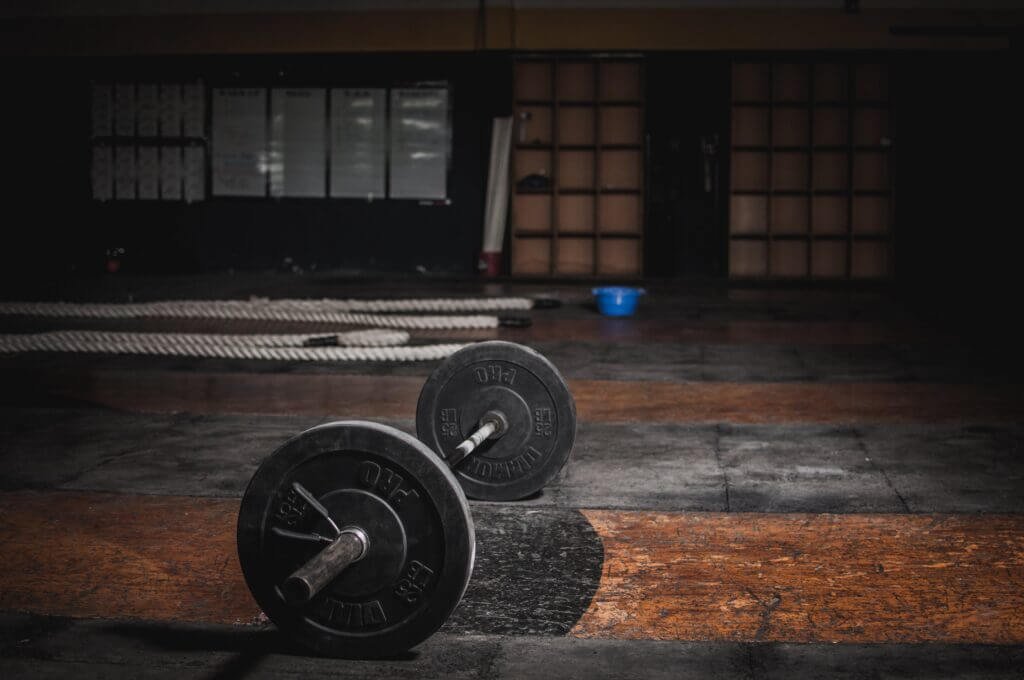
Establish an equipment maintenance routine
Clean equipment after each use
Maintaining your workout equipment is crucial for safety and longevity. After each use, take the time to clean your equipment. Wipe down machines, benches, or mats to remove sweat or dirt. Clean the handles and grips of dumbbells and resistance bands to prevent the buildup of bacteria. Regularly cleaning your equipment not only keeps it in good condition but also promotes a hygienic and pleasant workout environment. By incorporating cleaning into your routine, you ensure that your home gym stays organized and enjoyable to use.
Perform regular inspections and repairs
Regularly inspecting your workout equipment is essential for identifying any signs of wear or damage. Check for loose screws, frayed cables, or any other issues that may compromise the safety or functionality of the equipment. If you come across any problems, make the necessary repairs or contact a professional for assistance. By addressing maintenance needs promptly, you can prevent accidents and prolong the lifespan of your equipment. Regular inspections and repairs are an important part of keeping your home gym organized and ensuring that everything is in good working order.
Keep a maintenance log
Keeping a maintenance log is a helpful way to stay on top of equipment maintenance and repairs. Create a simple log where you can record the date, equipment inspected, and any maintenance performed. This log serves as a reference for future inspections and helps you keep track of any ongoing issues or concerns. By maintaining a detailed log, you can easily identify patterns or recurring problems and address them promptly. A maintenance log is an effective tool for staying organized and proactive in maintaining your home gym.
Store equipment properly to prevent damage
Proper storage plays an important role in equipment maintenance. Make sure to store your equipment in a way that prevents damage and ensures its longevity. For example, dumbbells and weight plates should be stored on racks or designated shelves to prevent them from rolling or getting damaged. Resistance bands should be kept in a way that minimizes stretching or tangling. When not in use, cover machines or equipment to protect them from dust or moisture. By storing your equipment properly, you not only keep your home gym organized but also extend the lifespan of your equipment.
Implement safety measures
Allow for sufficient floor space
When organizing your home gym, it’s important to allow for sufficient floor space. Avoid cluttering the floor with equipment, as this can create hazards and increase the risk of accidents. Ensure that there is ample space between equipment to safely navigate and perform exercises. Leave enough clearance around machines to avoid collisions or tripping. By prioritizing safety and allowing for adequate floor space, you can create a secure and enjoyable workout environment.
Ensure proper ventilation and lighting
Proper ventilation and lighting are essential elements for a functional home gym. Ensure that your gym has proper airflow to prevent stuffiness or discomfort during workouts. If necessary, consider using fans or opening windows to improve air circulation. Additionally, ensure that your gym is well-lit with ample lighting. Good lighting not only enhances safety but also creates a more pleasant and inviting atmosphere. By prioritizing ventilation and lighting, you can create a home gym that is safe, comfortable, and conducive to effective workouts.
Secure heavy equipment and racks
To prevent accidents, it’s important to secure any heavy equipment or racks in your home gym. Anchor larger equipment, such as weight benches or power racks, to the walls or floor to prevent tipping. This is particularly important if you have children or pets in the home. Additionally, secure storage racks or shelves to the walls to prevent them from falling or collapsing under the weight of your equipment. Prioritizing the stability and security of heavy equipment and racks is essential for maintaining a safe and organized home gym.
Create a safe working environment
Creating a safe working environment goes beyond just organizing your equipment. Consider the layout of your home gym and ensure that there are no tripping hazards or obstructions in your workout area. Keep cables and cords tucked away or secured to prevent accidents. Place exercise mats or flooring to provide a cushioned surface and reduce the risk of injuries. By taking the necessary steps to create a safe working environment, you can enjoy your workouts with peace of mind and reduce the chances of accidents or injuries.
Keep frequently used items easily accessible
Place commonly used equipment at eye level
When organizing your home gym, it’s important to keep frequently used items easily accessible. Place commonly used equipment at eye level, where you can easily see and reach them. This includes items like dumbbells, resistance bands, or yoga mats. By having these items within immediate reach, you eliminate the need to search or dig through storage spaces during your workouts. This convenience allows you to maintain the flow of your exercise routine and ensures that you can transition smoothly between different exercises.
Designate a dedicated space for everyday items
Designating a dedicated space for everyday items is an effective way to maintain an organized home gym. This can include items such as water bottles, towels, or workout journals. Create a designated area or storage bin for these everyday items, making them easily visible and accessible. By having a specific spot for these items, you eliminate the clutter that can accumulate when they are left scattered around the gym. Establishing dedicated spaces for your everyday items promotes an orderly environment and saves you time when setting up for your workouts.
Organize accessories in reachable areas
To ensure that accessories are readily available when needed, organize them in reachable areas of your home gym. This can include items such as resistance bands, exercise balls, or jump ropes. Store these accessories in compartments or on shelves that are easily reachable, either at waist height or within arm’s reach. By organizing accessories in this way, you can quickly grab what you need without disrupting your workout flow. This ensures that you can seamlessly incorporate accessories into your exercises and maintain an efficient workout routine.
Maintain an orderly arrangement for convenience
Keeping an orderly arrangement of your workout equipment is crucial for maintaining convenience in your home gym. Once you establish designated spots for different items, make it a habit to return them to their respective places after each use. This includes items such as weights, yoga mats, or foam rollers. By consistently maintaining an orderly arrangement, you prevent clutter from accumulating and ensure that equipment is always readily available for your next workout. Regularly tidying up your home gym keeps it visually appealing and functional.
Utilize storage hacks and space-saving techniques
Fold and stack workout mats
If you have workout mats in your home gym, utilize storage hacks to save space. Fold the mats in half or roll them tightly to minimize their footprint. Stack them vertically or horizontally on shelves or in designated storage bins. By using these space-saving techniques, you can efficiently utilize storage space and keep your mats organized. Remember to label the storage space for mats to ensure that you can easily locate them when needed.
Utilize hanging storage for resistance bands
Resistance bands are versatile workout accessories, and hanging storage is an excellent way to keep them organized and easily accessible. Install hooks or racks on a wall and hang the resistance bands by their handles. This prevents them from tangling and makes it easy to select the desired resistance band quickly. Hanging storage also helps to keep your resistance bands in good condition and makes them visually appealing in your home gym.
Use adjustable dumbbell sets
Adjustable dumbbell sets are an excellent investment for a home gym, both for their versatility and their space-saving benefits. These dumbbells allow you to adjust the weight as needed, eliminating the need for multiple pairs of dumbbells. This not only saves you space but also contributes to a more organized and clutter-free gym. With an adjustable dumbbell set, you can have a wide range of weight options without sacrificing storage space or organization.
Implement multi-purpose storage solutions
To maximize your storage space and keep your home gym organized, consider implementing multi-purpose storage solutions. For example, invest in a weight bench that has built-in storage for weights or resistance bands. Opt for a storage ottoman that doubles as a seating option and also has storage compartments for smaller equipment or accessories. These multi-purpose storage solutions help you efficiently utilize space while keeping your equipment easily accessible and neatly stored.
Consider aesthetics and personal preferences
Incorporate your preferred color scheme
When organizing your home gym, don’t forget to consider aesthetics and personal preferences. Incorporate your preferred color scheme into the design of your gym. Choose storage containers, shelves, or equipment in colors that you find visually appealing and motivating. This personal touch not only enhances the overall look of your home gym but also creates a space that reflects your individual style. By incorporating your preferred color scheme, you can create a workout environment that inspires and energizes you.
Arrange equipment based on visual appeal
In addition to functionality, consider arranging your workout equipment based on visual appeal. Place larger or more visually striking equipment, such as cardio machines or weight benches, in prominent areas of your gym. Arrange smaller items or accessories in an aesthetically pleasing manner on shelves or in storage bins. By taking the time to arrange your equipment with visual appeal in mind, you create a home gym that feels inviting and encourages you to stay motivated throughout your workouts.
Use decorative elements to enhance the space
Don’t underestimate the power of decorative elements in your home gym. Incorporate motivational quotes, posters, or artwork that inspires you to reach your fitness goals. Display plants or flowers to bring a touch of nature into your workout space. By adding these decorative elements, you create a gym environment that is visually appealing and helps to lift your spirits during your workouts. Remember, your home gym is not just a functional space but also a place where you can find inspiration and motivation.
Create a motivating and inspiring environment
Lastly, when organizing your home gym, aim to create a motivating and inspiring environment. Personalize your space with items that represent your fitness journey or goals. This can include medals, achievement certificates, or pictures of your favorite athletes. Display quotes or affirmations that motivate you to push harder or stay dedicated to your workouts. By creating a motivating and inspiring environment, you can enhance your overall workout experience and make your home gym a place you truly enjoy being in.
Regularly declutter and reorganize
Periodically assess and declutter equipment
It’s essential to periodically assess your workout equipment to prevent clutter from accumulating in your home gym. Take the time to go through your equipment and assess what you use regularly and what you don’t. Consider donating or selling equipment that you no longer need or use. By periodically decluttering your home gym, you not only free up space but also ensure that your equipment remains organized and functional.
Reevaluate the layout for better efficiency
As your workout routine or equipment changes, it’s important to reevaluate the layout of your home gym for better efficiency. Consider if the current arrangement of equipment and storage solutions is still optimal for your needs. Make adjustments as necessary, such as rearranging equipment or adding new storage solutions. By regularly reevaluating the layout, you can ensure that your home gym remains organized and tailored to your specific preferences and workout routines.
Adjust storage systems based on changing needs
Just as equipment and layouts change, your storage needs may also evolve. Be flexible and adjust your storage systems as needed to accommodate new equipment or accessories. For example, if you start incorporating new types of exercises into your routine, you may need additional storage solutions. Be open to making adjustments and investing in new storage equipment when necessary. This proactive approach to adjusting storage systems ensures that your home gym remains organized and functional as your fitness journey progresses.
Maintain a clutter-free and functional gym
To maintain a clutter-free and functional gym, make it a habit to regularly tidy up and put equipment back in its proper place. After each workout session, take a few minutes to return equipment to its designated spot. Put away any accessories or smaller items that were used. By cultivating the habit of maintaining a clean and organized gym, you create a welcoming space that promotes focus and productivity during your workouts. A clutter-free and functional gym allows you to fully enjoy your workouts and achieve your fitness goals.
In conclusion, organizing your workout equipment in a home gym requires careful consideration of your space, the right storage solutions, categorizing equipment, implementing a labeling system, establishing an equipment maintenance routine, implementing safety measures, keeping frequently used items easily accessible, utilizing storage hacks and space-saving techniques, considering aesthetics and personal preferences, and regularly decluttering and reorganizing. By following these tips, you can create a well-organized and functional home gym that inspires motivation and supports your fitness journey.
